Pub brawl
Hello Quartz readers,


Hello Quartz readers,
As countries slowly open up, governments are edging closer to implementing some form of vaccine passport: certificates for travelers in the EU, credentials to attend sports games or take cruises in the US, or passports for the 47,000-odd pubs in the UK.
But the politics of vaccine passports is making for some strange bedfellows. Liberal and conservative governments both seem to be in favor, while united in varying degrees of skepticism are privacy campaigners, libertarians, the WHO—and the UK’s pub industry.
The British government is expected to announce its plans for vaccination credentials within the next two weeks, and prime minister Boris Johnson has acknowledged “there is going to be a role for certification.” The British Institute of Innkeeping, a trade body, called the government’s ideas for vaccine passports “unworkable” and “baseless.” Tim Martin, the chairman of a chain of pubs called Wetherspoon, wrote in The Telegraph that passports would be “the last straw” for struggling bars.
At first glance, these worries seem counterintuitive. Vaccine passports are being touted as a pro-business initiative—a way for establishments like pubs to function safely as economies reopen. But pub owners fret that the responsibility to check passports and turn away the uninoculated is too steep. “It would inevitably put pub staff on the frontline of a bitter civil liberties war, with some customers unwilling to be vaccinated or unable to have a jab for medical reasons,” Martin wrote. Another pub proprietor called the idea “a minefield.”
These concerns reflect just how thorny the vaccine passport terrain is. Would a jab of the Russian Sputnik vaccine or the Chinese Sinopharm vaccine be accepted? Which kinds of medical exceptions would qualify? What penalties might pubs incur if they are insufficiently thorough in their screening? After a year of hardship, pubs will be hard-pressed to deploy enough resources and personnel to cover these bases. And enforcing vaccine passports will mean turning away some of their best customers: people in their 20s and 30s, who aren’t first in line to receive jabs.
Like all other businesses, pubs are hoping for a 2021 that can—coronavirus permitting—offset some of last year’s heavy losses. Fobbing off an unvaccinated segment of their loyal clientele may make sense for public health, but it won’t make up for a dismal 2020. —Samanth Subramanian
Five dinner-table convos
😮💨 In development: inhaled vaccines. There are currently 13 Covid-19 vaccines in use across the globe, all of them shots in the arm. Now, a race is on to create alternatives that would be easier to store, distribute, and administer: vaccines you can inhale. “Think about a vaccine you could mail out to people,” says Renata Pasqualini, an oncologist and chief science officer at a startup developing an inhaled Covid-19 vaccine. “That’s the future.”
💉 AstraZeneca proves drug regulation works. The confusion around AstraZeneca’s conflicting data could damage the vaccine’s credibility with the general public, but this is how pharma regulation is supposed to work—it’s just rarely been so public, or speedy. “What we’re dealing with here is a really truncated timeline where the [US Food and Drug Administration] has all these emergency powers,” says law professor Jordan Paradise. “One of them is the emergency use authorization.”
🌍 Africa may not reach herd immunity until 2023. The Economist Intelligence Unit predicts South Africa will be the only country on the continent able to vaccinate its population any earlier (mid-2022). One of the biggest factors the EIU cites as complicating local vaccine rollouts: More than 50% of the world’s shots have been “pre-booked” by predominantly wealthy countries, making up 15% of the world’s population.
😬 This is what a syndemic looks like. What’s the word for concurring epidemics all affecting one region, each making the other worse? That’s a syndemic—and it’s what America is in right now. The term was coined in the 1990s by anthropologist Merrill Singer as “a set of closely interrelated endemic and epidemic conditions” during the HIV/AIDS crisis. This framework has the advantage of looking at how underlying social issues worsen health conditions, and thus leads to better long-term solutions.
🕹️ Watching people play video games is not a passing fad. The global video game industry is worth nearly $200 billion annually, and live-streaming on platforms like Twitch and YouTube is a small but rapidly growing part of that. For Gen Z, watching live-streams can be as natural as older generations turning on the TV or flipping on the radio. But for everyone else, the sheer speed and scale at which video game livestreaming has taken over entertainment—and changed what it means to be a celebrity—can be shocking.
To unlock this week’s field guide on video game live streaming, you must traverse the Mushroom Kingdom, defeat Bowser, and rescue Princess Peach. Or just sign up for a free trial of Quartz membership.
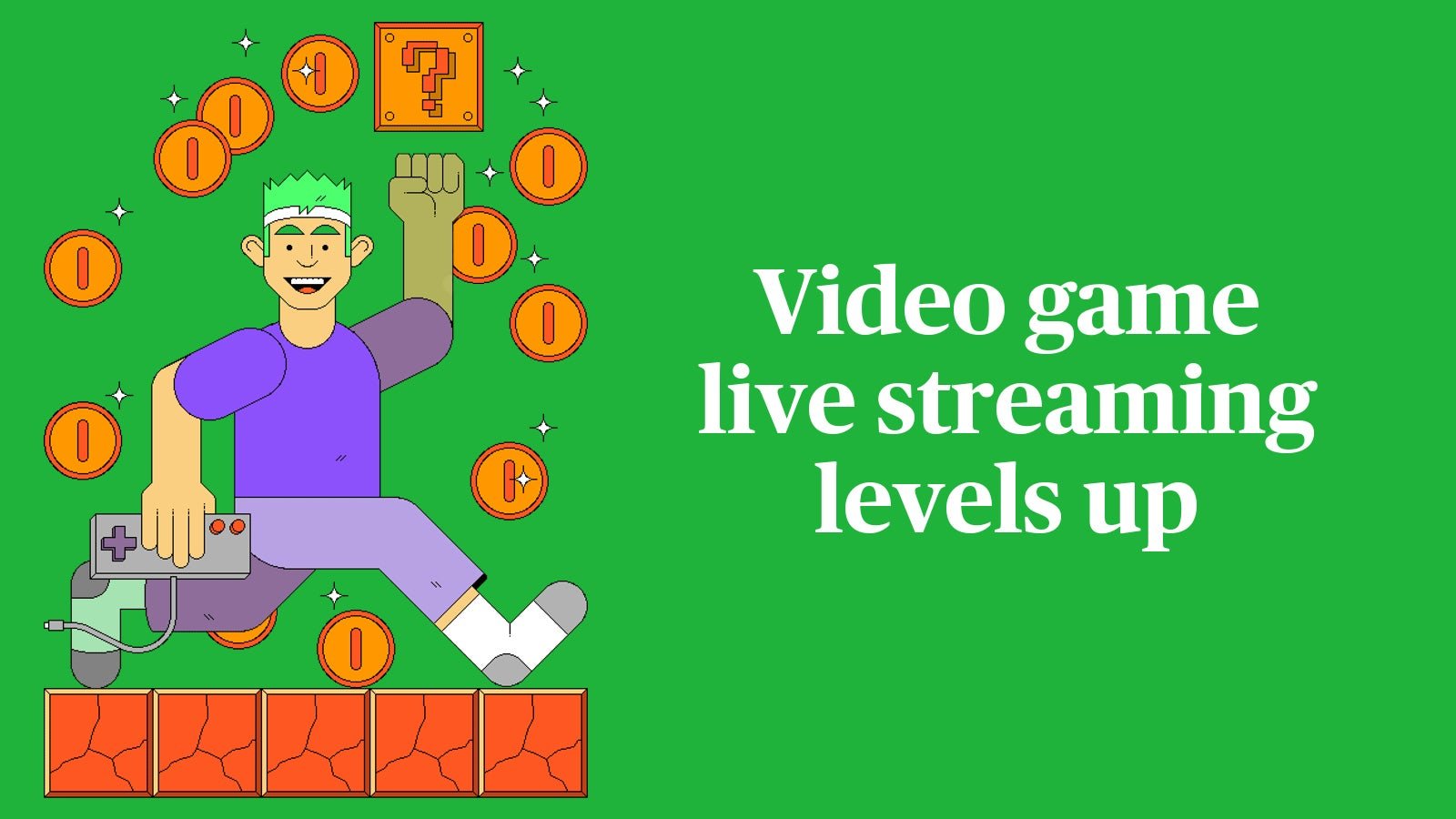
What she said
“All of the vaccines that are currently licensed are building on decades of previous research. So, if your concern is something like that, then our hope is that our website will support you in providing the answers. If your concern is that Bill Gates has put a microchip in [the vaccine], our website won’t address that, because that’s probably about something much wider.” —Kavita Vedhara, a University of Nottingham professor whose forthcoming website answers Britons’ most common questions about vaccines
Europe’s vaccine program has been plagued by three different problems: low supply, ineffective on-the-ground distribution, and vaccine hesitancy among the population. All three of these strands have converged to create a public relations and public health crisis, one that’s centered on the vaccine made by AstraZeneca. As Annabelle Timsit reports, what’s clear is that the pandemic’s next frontier in Europe will be conquered not in hospitals, but in people’s minds.
Getting invested
While the pandemic has disproportionately hurt women financially—impacting everything from unemployment to childcare—Michelle Cheng looks at a simultaneous phenomenon: As retail trading takes off with a younger and more diverse group of stock owners, more women are actively managing investments.
Part of it might be explained by income. Women tend to have lower lifetime earnings than men, so they frequently have less retirement money to invest than men do. But in recent years, women in the US have reached parity in educational attainment—and though the earnings gap persists, income levels for women were picking up prior to the pandemic.
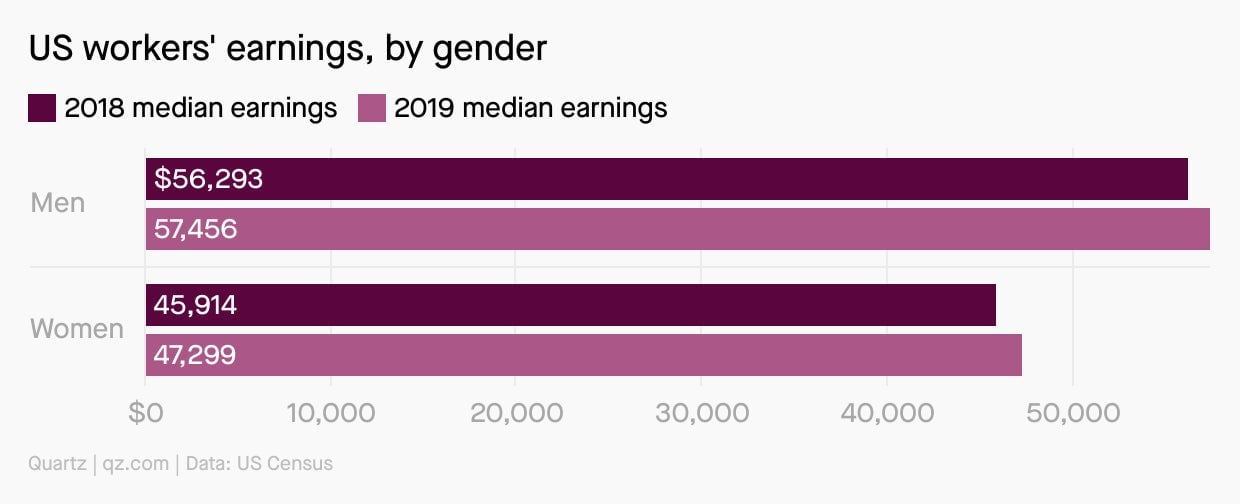
You asked
The virus is everywhere, but in Africa it’s not as bad as it could be. Why is Africa not affected like other continents such as Europe?
Great question—the answer is something of a mystery. Scientists partly credit Africa’s young population: The median age on the continent is 20 years old, compared with a median age of 43 in Europe, and the risk of dying from Covid-19 doubles with roughly every eight years of age.
Less testing across Africa compared with other parts of the world might have also led to missed cases. Death tolls could be off as well. South Africa, for example, officially recorded about 30,000 deaths from Covid-19 during its second wave, but tracking of excess deaths there suggests the toll may have been three times higher.
Still another hypothesis holds that previous exposure to coronaviruses (resembling the one that causes Covid-19) has generated immunity in some countries. But note, too, that the pandemic isn’t over. Its second wave hit Africa harder than the first, and left countries bracing for surges to come.
Interested in more news from Africa? We’ve got a whole email for that. Sign up for the Africa Weekly Brief to receive updates, analysis, development opportunities, and song recs, right in your inbox.
The art of coping
The pandemic year has created at least one lasting legacy in India, and it’s not an abundance of caution when it comes to public health. All across India’s cities, street art has emerged to inspire, motivate, and amuse locals contending with Covid-19. Alongside social distancing markers, signage, and masks, the murals add an aesthetic dimension to a pandemic that has become a ubiquitous part of daily life.
In Mumbai:
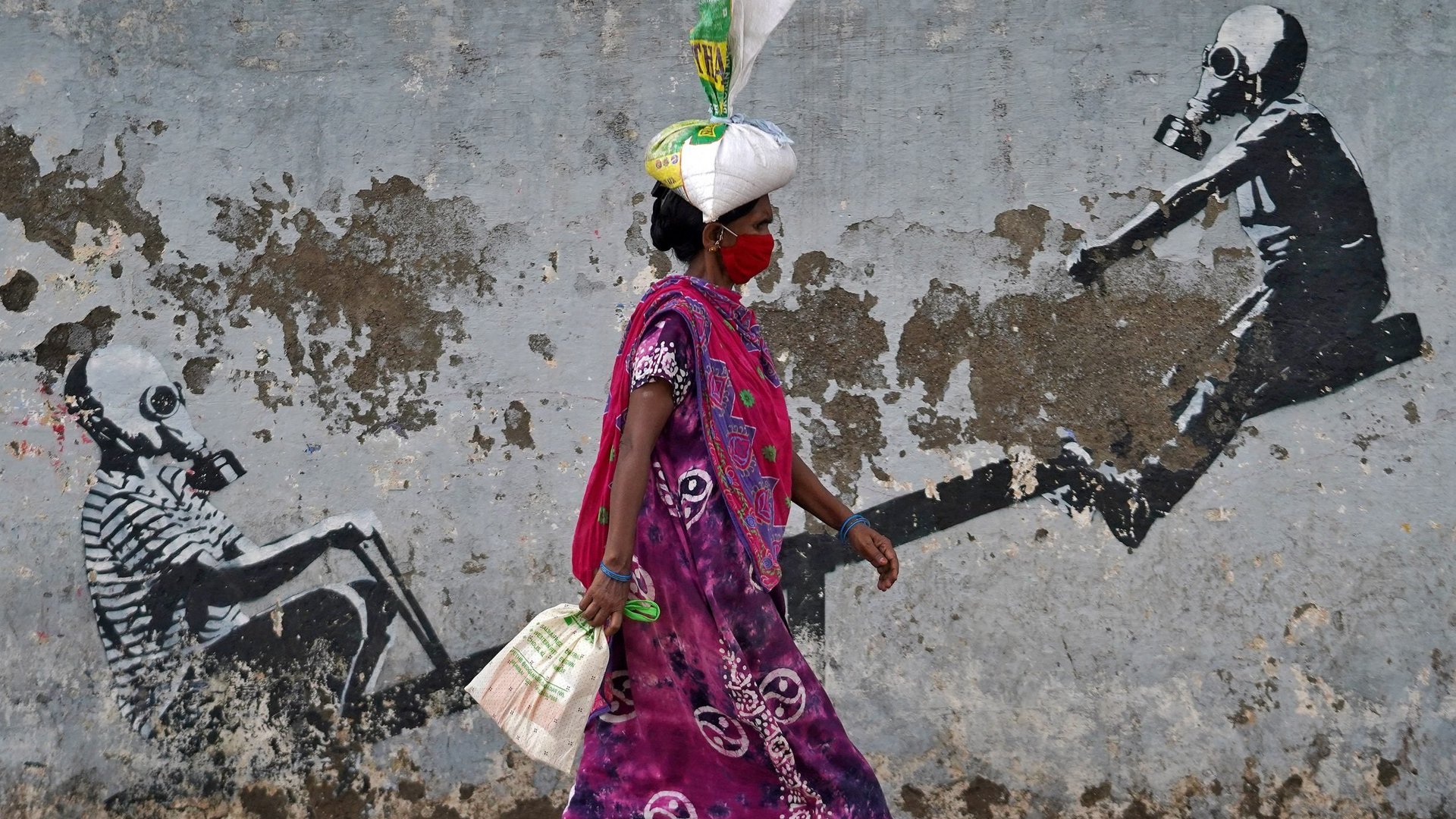
In New Delhi:
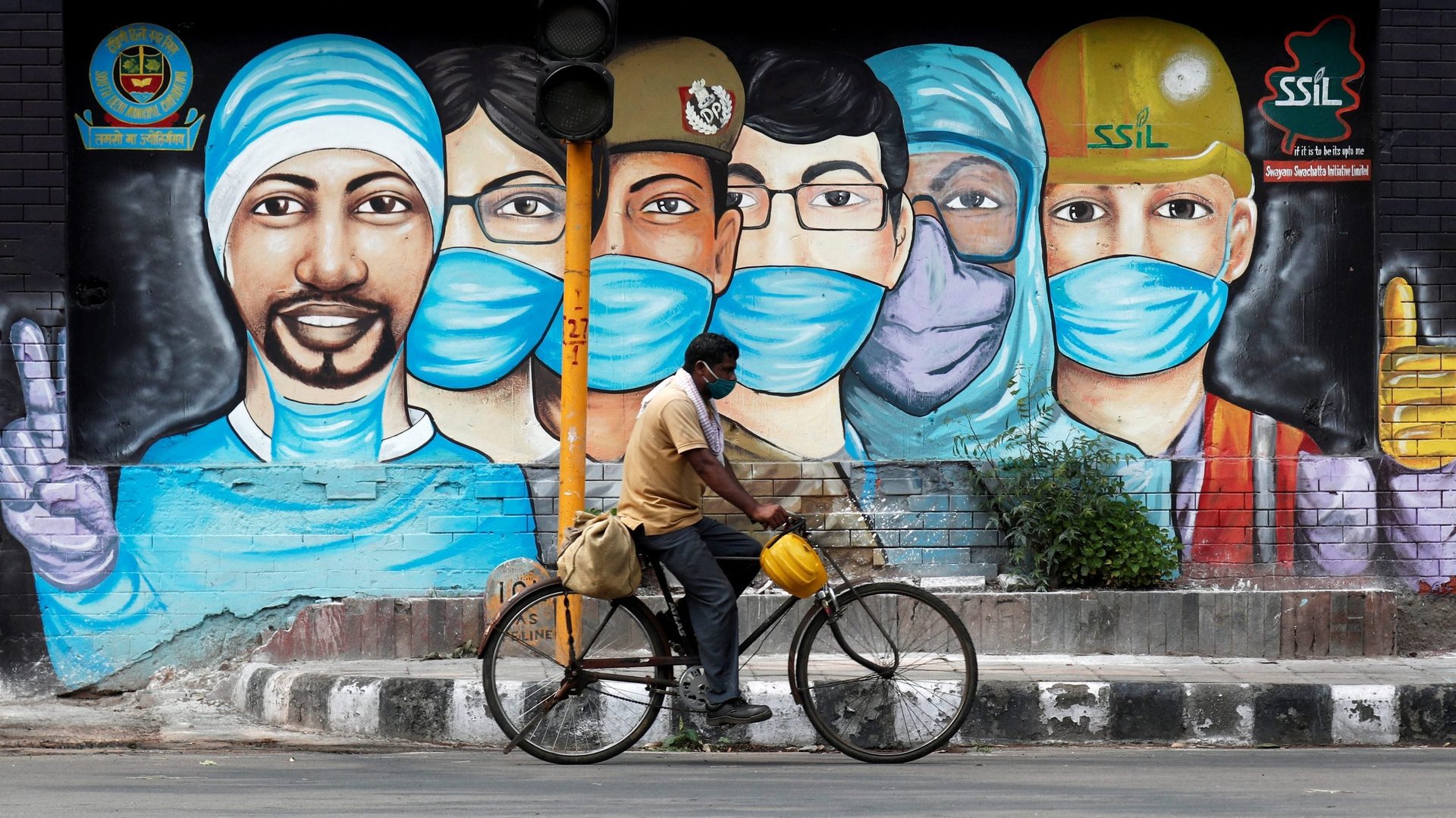
In Bangalore:
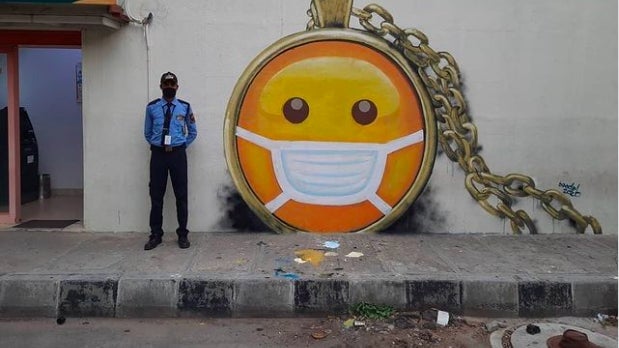
Essential reading
- The latest 🌏 figures: 128.3 million confirmed cases; 72.8 million classified as “recovered;” 574 million vaccine doses administered.
- Origin story: Covid-19’s genesis could have major geopolitical consequences.
- System failure: For-profit nursing homes are understaffed by design.
- Solar flair: The sun will power large parts of Africa’s vaccination program.
- Not easy being green: How offices can reopen with a lower carbon footprint.
Our best wishes for a healthy day. Get in touch with us at [email protected], and live your best Quartz life by downloading our iOS app and becoming a member. Today’s newsletter was brought to you by Samanth Subramanian, Katherine Foley, Jackie Bischof, Annalisa Merelli, Adam Epstein, Annabelle Timsit, Michelle Cheng, Brian Browdie, Manavi Kapur, and Kira Bindrim.